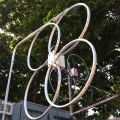The KiwiSDR 2 online store is open for orders! Please visit kiwisdr.nz
Please visit kiwisdr.com (documentation) and kiwisdr.nz (online store)
G8JNJ
About
- Username
- G8JNJ
- Joined
- Visits
- 3,719
- Last Active
- Roles
- Member
- Points
- 16
Reactions
-
V1.212 8ch mode - G8JNJ still not displaying on TDoA Map despite no users and good GPS [fixed]
Hi John,
Ah my fault. I hadn't realised that selecting one of the coloured tabs on the config page actually selected the method, I thought they were just tabs to access the config entry boxes. I'd accidentally left the reverse proxy tab set the last time viewed the separate options and then exited the page.
Now I've been made aware of it I properly understand the notes above the tabs.
Thanks for the quick fix, and apologies for the confusion.
Regards,
Martin - G8JNJ -
Any Ideas [AM BCB overload]
@Lonecrow
Two things make a difference to the Mini-Whip signal level. The height above 'ground' and the length of the actual Whip element.
PA3FWM has some good notes on the subject.
http://www.pa3fwm.nl/technotes/tn07.html
Regards,
Martin - G8JNJ -
Home Brew Broadband Magnetic Loop
Hi Ron,
The reduction in IP products with improved amplifier balance are likely to be mostly 2nd order products.
One trick you could try is to place a 1:1 voltage balun (a pair of bilfilar windings with the end of winding one connected to the start of winding two ) across the amplifier input with the center tap to ground. You may need to experiment with the number of turns and type of ferrite but this is likely to be just as effective (and easier to construct) as an isolating input transformer with a grounded center tap on the secondary (amplifier input) side.
Regards,
Martin - G8JNJ -
Participation of Kiwis in the TDoA process
This thread covers splitting GPS feeds.
http://forum.kiwisdr.com/discussion/comment/3949#Comment_3949 -
Participation of Kiwis in the TDoA process
Another success today - I emailed Esteban, EA8DGL, and asked if he could enable his GPS as he's in a great location for TDoA in the Canary Islands just of the West coast of Africa.
He very kindly did this today and he's now appearing on the TDoA map :-)
The other good news is that he's just got his Amateur licence and permission to put a better antenna up, so hopefully reception will soon be even better.
My thanks to Esteban for doing this.
If anyone else feels like emailing other KiWi owners in key locations that would be very helpful too.
Maybe we should compile a 'hit' list ?
Regards,
Martin - G8JNJ




